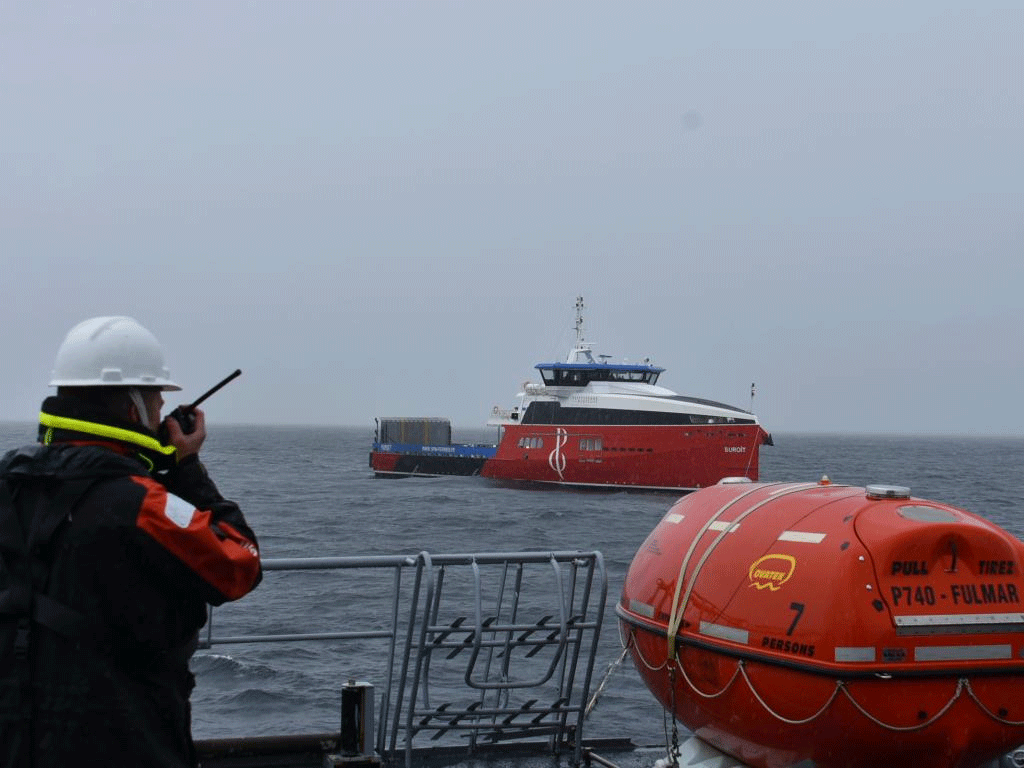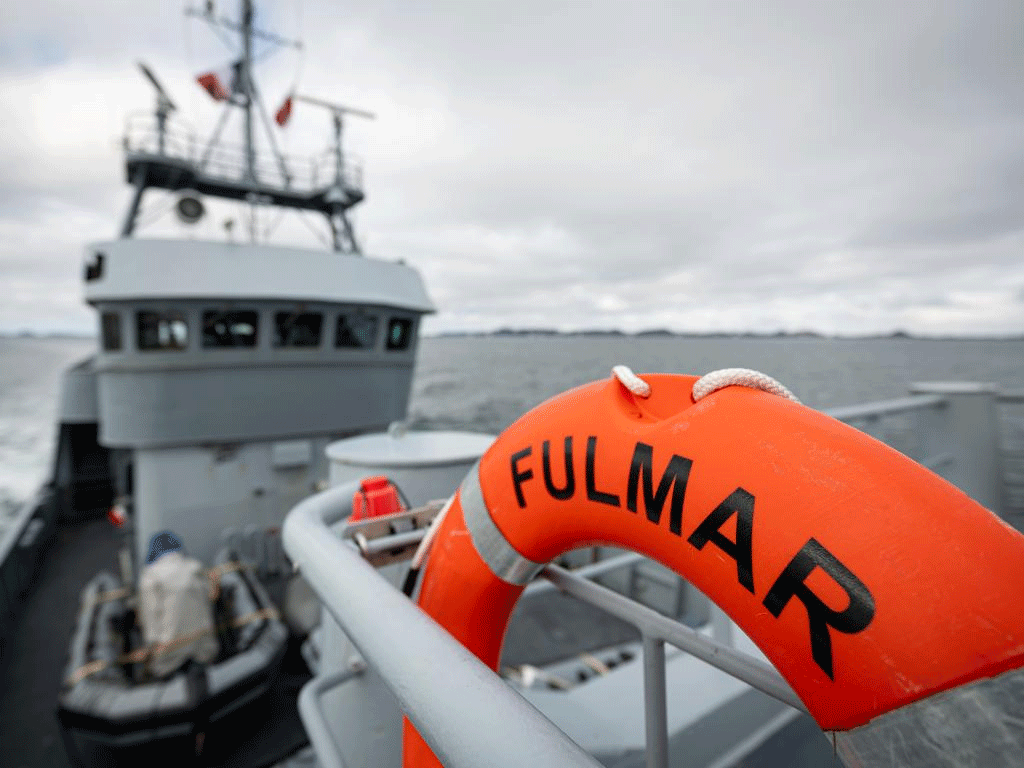In North America, Saint Pierre and Miquelon is the only French territory that allows the State to possess a significant exclusive economic zone. Since 1997, it is the patrol boat Fulmar that has asserted French sovereignty in these waters, particularly with regard to State action at sea. Cols bleus spent 12 hours on board with the crew.
It is one of the smallest French warships. However, its area of action, the Atlantic Ocean bordering the Grand Banks of Newfoundland, is immense. A kingdom over which reigns the Fulmar, a former trawler built in 1990, which became a patrol boat for the maritime gendarmerie in 1996 and then for the French Navy in 2009. With its crew limited to 12 sailors – including only one officer – its role is to ensure a French presence at sea in North America (patrol, sovereignty action, sea rescue, navigation police, fisheries police, assistance to ships in distress, cooperation with allies.
When the Fulmar sets sail on this Wednesday morning, gradually leaving the colorful houses of Saint-Pierre behind, the sky is gray but free of fog. The objective of the day is twofold: to have the crew members practice shooting and to go and spot fishing traps that could disrupt navigation and present an environmental risk. Although 4,000 kilometers separate Saint-Pierre from Brest, this French archipelago of barely 242 square kilometers is only 25 kilometers from Newfoundland in Canada. It is full of immense underwater plateaus rich in numerous hydrocarbon and fishery resources, of which cod was one of the emblematic species.
On the bridge, Chief Petty Officer Sébastien steers the ship toward the firing zone in the cold waters of the Atlantic. Responsible for organizing the exercise, Chief Petty Officer Vincent briefs the crew. Chief Officer of the Watch and ship’s diver, he also officiates in the kitchen as a commis. Like him, the twelve sailors on board perform several functions due to the small number of crew.
On the port side, Lieutenant Commander François Mauger, the patrol boat’s commander, his eyes fixed on the ocean, supervises the exercise and gives his orders. The exercise over and the debriefing carried out, the vessel prepares to carry out its second mission.
A hostile environment
In his office, holding the book Patrouille au Grand Nord by Patrice Franceschi, the commander recalls the primary function of the boat: sea rescue. The crew is on alert at 24 hours during the winter and 6 hours in the summer. While recovering a crew member who has fallen overboard is the lot of all Navy boats, the Fulmar adds to the equation a hostile environment to which it must adapt: ” The weather conditions do not always allow us to launch a lifeboat,” explains the commander. ” So we came up with a system that allows the castaway to roll up with a hawser to be rescued ,” he continues.
The Fulmar also practices towing vessels at sea, in cooperation with the community’s ferries, which carry passengers several times a week from the archipelago to the island of Newfoundland in Canada. “ As soon as the weather conditions allow, we will plan an exercise with a fisherman,” says CC Mauger.
Local and international cooperation
In this French territory bordered by Canada, the sharing of strategic maritime issues generates strong cooperation between the Fulmar and its Canadian, American and Danish counterparts, Greenland being to the north of the archipelago. Every year, in June, the patrol boat participates in a SAR (Search and Rescue) exercise with the Coast Guard and the helicopter squadrons of the Canadian Air Force. In an area ” where people know the sea well and know how to navigate “, interventions are fortunately rare.
Versatile, the Fulmar also fights against maritime pollution. “ A ton of fuel oil can generate eight tons of waste on land .” In order to dilute pollution at sea, the patrol boat has spreading ramps, a net and a skimmer.

The Fulmar also works closely with Maritime Affairs, particularly in the context of fisheries policing. “ We check that the boats are giving and recording their position using AIS and VMS systems,” explains the commander . “And we check that they have fishing rights .” “The goal is to defend the interests of the people of Saint-Pierre by ensuring that Canadian fishermen respect fishing rights in our EEZ.”
In the coming months, the captain and his crew will work in concert with local biodiversity stakeholders. An agreement should be signed to help count seals on the island of Miquelon. In addition, the vessel will monitor abandoned aquaculture sectors. The patrol boat’s divers will go and count them in order to assess the risk they present to navigation, before handing over to the public service of lighthouses and beacons.
Follow the seasons
The ship’s 2025 program will follow the seasons in order to adapt to climate constraints. In winter, training will be done during the day with missions under the AEM. In spring, the ship will head south to the Great Lakes region to benefit from better weather conditions and cooperate with the American and Canadian coast guards. On its return, the crew will train a quarter of the students of the Jeanne d’Arc mission. Finally, in summer, the Fulmar will lead a SAR exercise and ensure the safety of nautical events. Before its annual technical stop in the fall, the Fulmar will undertake a crossing to the Northwest Passage in August, if the ice situation allows. The objective is to better understand this area in a context of climate change and to improve our cooperation capacities with the Canadians and the Danes.
“No traps in the area we are patrolling, Captain,” reports a crew member. The order is given to return to port. A few minutes later, while the crew is split between the bridge and the beaches to prepare for the docking maneuver, a seal appears on the port side. The crew laughs. Being a sailor aboard the Fulmar is an atypical adventure, just like its territory.

